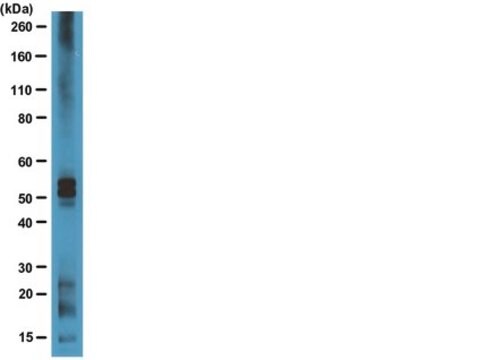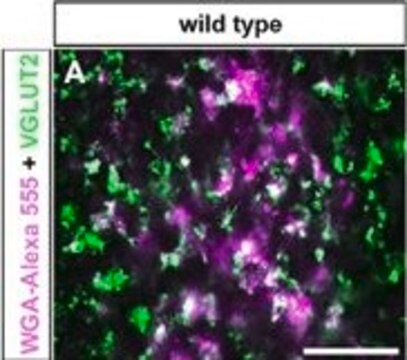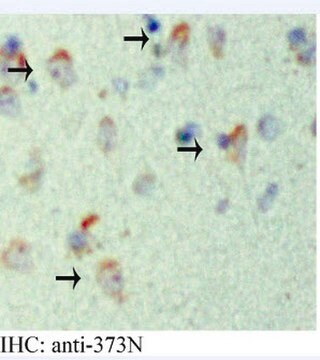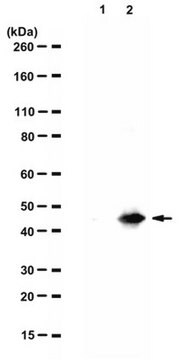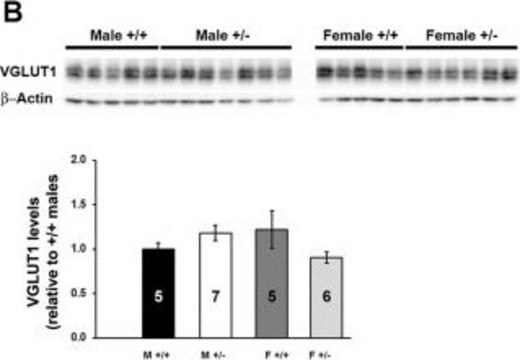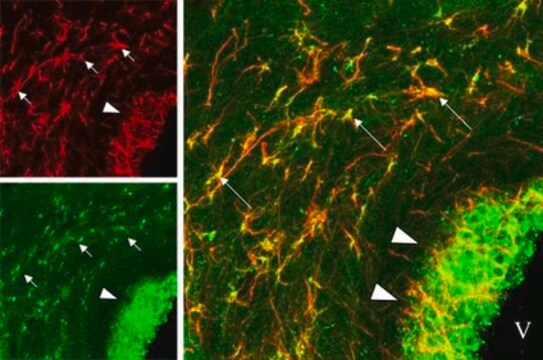ABN1642
Anti-APP Antibody, AEP-cleaved (585N)
serum, from rabbit
Synonym(s):
Amyloid beta A4 protein, 585N fragment, ABPP, 585N fragment, Alzheimer disease amyloid protein, 585N fragment, Amyloid precursor protein, 585N fragment, APP, 585N fragment, APPI, 585N fragment, Cerebral vascular amyloid peptide, 585N fragment, CVAP, 585N
About This Item
Recommended Products
biological source
rabbit
Quality Level
antibody form
serum
antibody product type
primary antibodies
clone
polyclonal
species reactivity
mouse, human
species reactivity (predicted by homology)
rabbit (based on 100% sequence homology), nonhuman primates (based on 100% sequence homology), canine (based on 100% sequence homology), guinea pig (based on 100% sequence homology), porcine (based on 100% sequence homology)
technique(s)
immunohistochemistry: suitable
western blot: suitable
NCBI accession no.
UniProt accession no.
shipped in
ambient
target post-translational modification
unmodified
Gene Information
human ... APP(351)
General description
Specificity
Immunogen
Application
Western Blotting Analysis: A 1:1,000 dilution from a representative lot detected APP N-terminal fragment 585N in brain tissue lysates from 5XFAD familial AD transgenic mice, but not from AEP-knockout 5XFAD mice (Courtesy of Dr. Keqiang Ye, Emory University, U.S.A.).
Western Blotting Analysis: A representative lot detected an increased APP N-terminal fragment 585N in AEP-containing brain fractions from 5-month-old 5XFAD familial AD transgenic mice than wild-type mice. No APP 585N fragment was detected in Aep-/- mice (Zhang, Z., et al. (2015). Nat. Commun. 6:8762).
Western Blotting Analysis: A representative lot detected an age-dependent increase of brain APP N-terminal fragment 585N in mice. Upregulated APP 585N fragment level was seen in human AD brain samples when compared with age-matched non-AD brains (Zhang, Z., et al. (2015). Nat. Commun. 6:8762).
Western Blotting Analysis: A representative lot detected AEP-cleaved recombinant GST-APP N-terminal fragment, but not the uncleaved GST-APP or the cleaved C-terminal fragment (Zhang, Z., et al. (2015). Nat. Commun. 6:8762).
Western Blotting Analysis: A representative lot detected AEP-cleaved APP N-terminal fragment 585N in untransfected, but not AEP siRNA-transfected, HEK293 cells (Zhang, Z., et al. (2015). Nat. Commun. 6:8762).
Neuroscience
Quality
Western Blotting Analysis: A 1:1,000 dilution of this antiserum detected APP(1-585), but not APP(1-373) or full-length APP, GST fusion exogenously expressed in HEK293 cells.
Target description
Physical form
Storage and Stability
Handling Recommendations: Upon receipt and prior to removing the cap, centrifuge the vial and gently mix the solution. Aliquot into microcentrifuge tubes and store at -20°C. Avoid repeated freeze/thaw cycles, which may damage IgG and affect product performance.
Other Notes
Disclaimer
Not finding the right product?
Try our Product Selector Tool.
recommended
Storage Class
12 - Non Combustible Liquids
wgk_germany
WGK 1
flash_point_f
Not applicable
flash_point_c
Not applicable
Certificates of Analysis (COA)
Search for Certificates of Analysis (COA) by entering the products Lot/Batch Number. Lot and Batch Numbers can be found on a product’s label following the words ‘Lot’ or ‘Batch’.
Already Own This Product?
Find documentation for the products that you have recently purchased in the Document Library.
Our team of scientists has experience in all areas of research including Life Science, Material Science, Chemical Synthesis, Chromatography, Analytical and many others.
Contact Technical Service